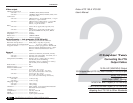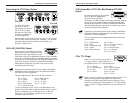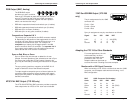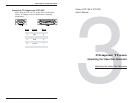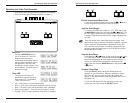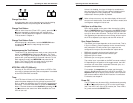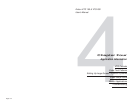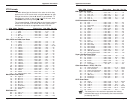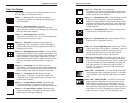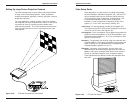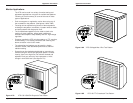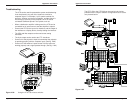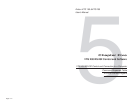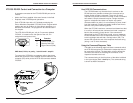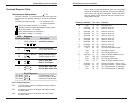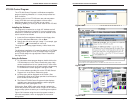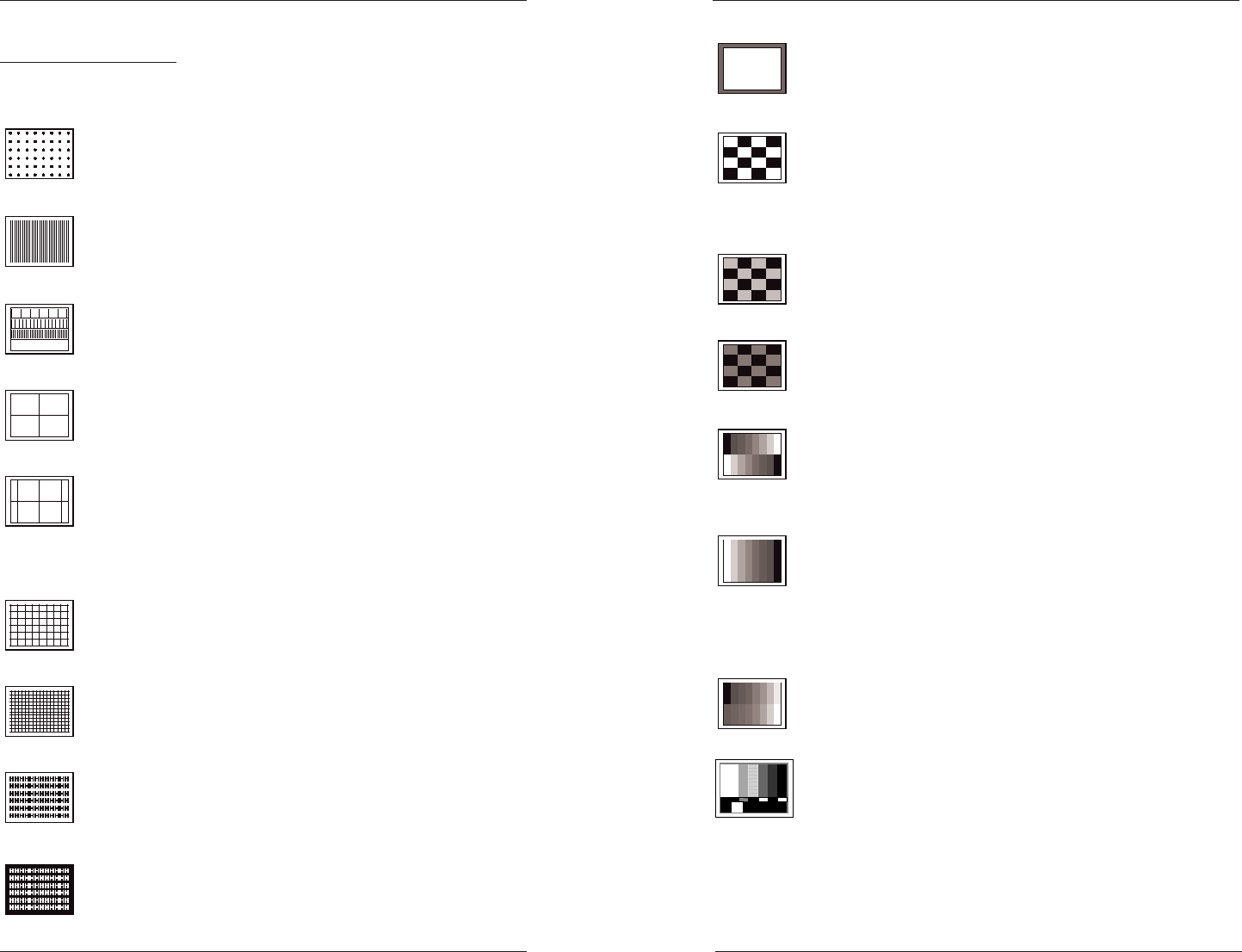
Extron • VTG 150 & VTG 200 • User’s ManualExtron • VTG 150 & VTG 200 • User’s Manual
Pattern 10 — Flat Field - Purity Adjustment
This pattern is for making purity adjustments, which means
making the entire picture completely white throughout the
screen, without any color deviation.
Pattern 11 — Checkerboard 100% - Contrast Range, Screen
Cutoff and Color Temperature. All three checkerboard
patterns are used together to check color tracking of video
amplifiers and adjust raster cutoff levels. It also may help in
evaluating video amplifier clamping stability and CRT high
voltage regulation.
Pattern 12 — Checkerboard 56% - Contrast Range, Screen
Cutoff and Color Temperature. See #11.
Pattern 13— Checkerboard 14% - Contrast Range, Screen
Cutoff and Color Temperature. See #11.
Pattern 14 — 8-Level Split Grayscale - Video Level Tracking
(Color) Video Gain Linearity (Mono). This pattern is used for
setting the grayscale, as well as, evaluating contrast
linearity and tracking from low to high level video on
monochrome and color monitors and projectors.
Pattern 15 — 8-Color Bar - Color Check, Verify Red, Green,
Blue Balance. This pattern is used for testing all the color
video channels and setting video drive levels. It is also used
to check low frequency cross talk between red, green and
blue video channels. It is commonly used for testing TTL
monitors, TTL and analog converters and enhancement
features of interfaces.
Pattern 16A — 16-color Bar - TTL Color Monitor Test & Split
Field Analog Color Bars 100%/56% (See #15). This pattern
is not available for the NTSC/PAL BNC output, see pattern
16B.
Pattern 16B — SMPTE/PLUGE - The SMPTE color bar and
pluge composite video pattern can be used to set up tint,
hue, brightness, contrast, gray scale and black level on
NTSC and PAL video equipment. This pattern is available
on the NTSC/PAL BNC output connector of the VTG 200 as
Test Pattern 16. It is NOT available on any other VTG 200
output connector or on the VTG 150. See pattern 16A.
Application Information
Page 4-4
Application Information
Page 4-3
Video Test Patterns
The following is a listing of the available test patterns and a
brief description of the purpose of each.
Pattern 1 — Dots 12 x 16 - Focus and Convergence
This pattern is effective for checking and adjusting focus
and convergence.
Pattern 2 — Alternating Pixels - Resolution
This one pixel on, one pixel off pattern is used to test
display resolution of monitors and projectors as well as EMI
testing for worst case radiation.
Pattern 3 — Alternating Pixels - Resolution
Same as #2 except that it has 1, 2, and 4 alternating pixels,
as well as a solid “all pixels on” field.
Pattern 4 — Crosshair - Vertical/Horizontal Image Tilt,
Orthogonality Test. This pattern is used for checking the
screen borders, picture tilt, and making sure the picture is
centered on the screen.
Pattern 5 — Rectangle/Square Crosshair - Linearity, Raster
Centering and Geometry. Use this pattern (and pattern 4) to
check and adjust the horizontal linearity. After centering the
raster, this pattern can be used to set geometry. The four
center boxes should be identical in height and width, and the
four outer rectangles should be identical in height and
width.
Pattern 6 — Crosshatch 12 x 16 - Static & Dynamic
Convergence - This pattern is used to check and adjust both
static and dynamic convergence, which means that the red,
green, and blue video signals are aligned on each other.
Pattern 7 — Crosshatch 24 x 32 - Static & Dynamic
Convergence - This pattern is used just as pattern #6
except that it has a finer test grid so the convergence can
be done more accurately.
Pattern 8 — H Pattern Black on White - Resolution/High
Frequency Response. This pattern is used to check or
evaluate video clamping stability and video pulse response.
Pattern 9 — H Pattern White on Black - Resolution/High
Frequency Response. This pattern can be used to check
display focus or video pulse response.



